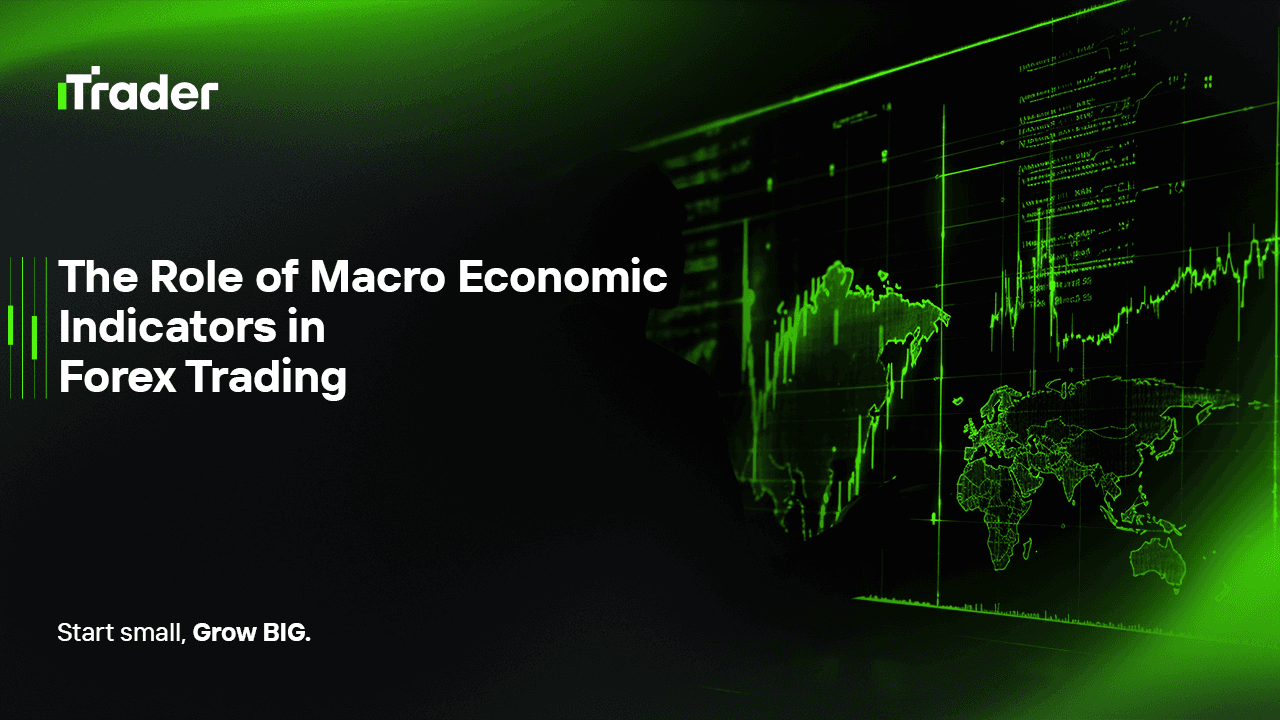2025-08-22
In the world of professional trading, especially for those engaged in prop firm challenges, understanding the forces that drive currency movements goes far beyond technical analysis. While price action, liquidity shifts, and order flow dynamics are crucial in short-term decision-making, the macro backdrop sets the stage upon which these micro-movements unfold. For prop traders who need consistent performance under strict drawdown and risk rules, grasping the relationship between macroeconomic indicators and forex market behavior is not just an academic exercise—it is a survival skill.

Currencies are, at their core, expressions of national economies. The health, stability, and policy direction of an economy shape investor perception, capital flows, and ultimately the valuation of its currency. This means that data points like GDP growth, inflation reports, interest rate decisions, and labor market trends are not simply numbers on an economic calendar; they are signals of structural pressure that shape medium- and long-term trends while also creating short bursts of volatility.
In this article, we will explore how macroeconomic indicators interact with forex markets, with a focus on what prop traders specifically need to extract from them. We will look at key economic data categories, how they impact currency valuations, the interplay with monetary policy, and practical strategies to incorporate macro awareness into a prop trading framework.
Prop firm traders often emphasize risk control, trade frequency, and execution discipline. Yet the majority of their failures are not due to poor entries but rather inadequate adaptation to market regime shifts. These shifts are almost always driven by macroeconomic developments—policy pivots, unexpected data surprises, or global capital rotations.
Ignoring macro means ignoring the root causes of volatility clusters. For example:
For a prop trader bound by strict maximum daily loss and overall drawdown limits, understanding these forces can prevent getting blindsided by volatility that looks “random” on the chart but is fully explainable through the macro lens.
Macroeconomic data releases are not created equal. Some indicators consistently move markets; others provide context without triggering major price shifts. Below are the key categories:
For traders, growth indicators matter because they influence risk appetite and central bank expectations.
Currencies often react violently to inflation surprises, since they directly affect interest rate futures pricing.
Interest rates are the ultimate driver of currency valuation. The expectation of higher yields attracts capital flows. Therefore, central bank meetings, forward guidance, and minutes are often more important than the data itself.
It is not the raw data that moves markets—it is the difference between expectation and outcome. A CPI print of 3.2% might strengthen a currency if consensus was 3.0%, but weaken it if traders had already priced in 3.5%.
This is why prop traders need to track expectations, not just releases. Economic calendars with consensus estimates, as well as tools like OIS curves and bond yield spreads, give critical context.
Another layer is market sentiment and narrative. In some regimes, traders ignore weak data if they believe a central bank is committed to tightening. In other regimes, even small misses can trigger outsized moves. Thus, the same number can have different effects depending on macro context.
One of the biggest advantages of macro awareness is in position sizing and risk allocation. Prop traders don’t need to predict every number, but they must anticipate volatility pockets.
In prop environments where risk per day is capped, managing exposure around macro events is essential for survival.
For prop traders looking to operationalize macro awareness, a simple framework can be:
While individual data releases move markets in the short run, larger macro cycles drive sustained trends. Prop traders who align with these cycles can ride multi-month moves while avoiding contrarian traps.
Key themes include:
Prop traders often focus heavily on technical precision—entry timing, spreads, execution speed. But without a macro compass, these micro-skills are vulnerable to shifts that feel random. In reality, nothing is random when you see the cause-effect chain: data → central bank expectations → capital flows → currency price.
Understanding macroeconomic indicators is not about becoming an economist; it’s about protecting capital, anticipating volatility, and aligning with the market’s dominant forces. For prop traders, it is the difference between surviving challenges and consistently scaling capital allocations.
© 2025 iTrader Global Limited|公司註冊編號:15962
iTrader Global Limited 註冊於科摩羅聯盟昂儒昂自治島穆扎穆杜 Hamchako,並受科摩羅證券委員會授權與監管。我們的牌照編號為 L15962/ITGL。
iTrader Global Limited 以「iTrader」為商業名稱經營,獲得從事外匯交易活動之授權。公司標誌、商標與網站均為 iTrader Global Limited 之專有財產。
iTrader Global Limited 的其他子公司包括:iTrader Global Pty Ltd,澳洲公司註冊編號(ACN):686 857 198。該公司是 Opheleo Holdings Pty Ltd 的授權代表(澳洲金融服務代表編號:001315037),Opheleo 持有澳洲金融服務執照(AFSL 編號:000224485),註冊地址為:Level 1, 256 Rundle St, Adelaide, SA 5000。
免責聲明:本實體並非本網站所交易金融產品之發行者,亦不對其負責。
風險提示: 差價合約(CFD)交易因槓桿效應具高度資本迅速損失風險,未必適合所有使用者。
參與基金、差價合約及其他高槓桿商品交易,需具備專業知識。
研究顯示,84.01% 的槓桿交易者最終蒙受損失。請務必充分了解相關風險,並在投入資金前確保自身已準備好承擔全部損失的可能性。
iTrader 特此聲明,對任何個人或法人因槓桿交易所導致之風險、損失或其他損害,概不承擔全部責任。
使用限制: iTrader 並不向法律、法規或政策禁止此類活動的國家或地區居民提供網站或服務。如您居住於限制使用本網站或服務之司法管轄區,您有責任自行確保遵守當地法律。